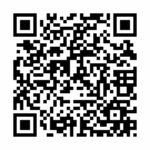You might think that questionnaire design is rather simple and easy; after all, it’s just a list of questions right? However, a proper questionnaire structure is one of the most vital steps in achieving successful results with your research. A good design will help respondents complete your survey, as you should never underestimate the power of something aesthetically pleasing! Read on to find out how a well-planned format for your survey will improve the accuracy of the data you collect…
The following provides you with guidelines for conducting your surveys:
- Write a short questionnaire
Above all, your questionnaire should be as short as possible. When drafting your questionnaire, make a mental distinction between what is essential to know, what would be useful to know and what would be unnecessary. Retain the former, keep the useful to a minimum and discard the rest. If the question is not important enough to include in your report, it probably should be eliminated.
- Use simple words
Survey recipients may have a variety of backgrounds so use simple language. For example, “What is the frequency of your automotive travel to your parents’ residents in the last 30 days?” is better understood as, “About how many times in the last 30 days have you driven to your parent’s home?”
- Relax your grammar
Relax your grammatical standards if the questions sound too formal. For example, the word “who” is appropriate in many instances when “whom” is technical correct.
- Assure a common understanding
Write questions that everyone will understand in the same way. Don’t assume that everyone has the same understanding of the facts or a common basis of knowledge. Identify even commonly used abbreviations to be certain that everyone understands.
- Start with interesting questions
Start the survey with questions that are likely to sound interesting and attract the respondents’ attention. Save the questions that might be difficult or threatening for later. Voicing questions in the third person can be less threatening than questions voiced in the second question. For example, ask: “How do your colleagues feel about management?” rather than “How do you feel about management?”
- Don’t write leading questions
Leading questions demand a specific response. For example: the question “Which day of the month is best for the newly established company-wide monthly meeting?” leads respondents to pick a date without first determining if they even want another meeting.
- Avoid double negatives
Respondents can easily be confused deciphering the meaning of a question that uses two negative words.
- Balance rating scales
When the question requires respondents to use a rating scale, mediate the scale so that there is room for both extremes.
- Don’t make the list of choices too long
If the list of answer categories is long and unfamiliar, it is difficult for respondents to evaluate all of them. Keep the list of choices short.
- Avoid difficult concepts
Some questions involve concepts that are difficult for many people to understand.
- Avoid difficult recall questions
People’s memories are increasingly unreliable as you ask them to recall events farther and farther back in time. You will get far more accurate information from people if you ask, “About how many times in the last month have you gone out and seen a movie in a movie theater or drive-in?” rather than, “About how many times last year did you go out and see a movie in a movie theater or drive-in?”
- Use Closed-ended questions rather than Open-ended ones
Most questionnaires rely on questions with a fixed number of response categories from which respondents select their answers. These are useful because the respondents know clearly the purpose of the question and are limited to a set of choices where one answer is right for them.
An open-ended question is a written response. For example: “If you do not want a company picnic, please explain why”. If there are an excessive number of written response questions, it reduces the quality and attention the respondents give to the answers.
However, InfoPoll allows you to use a wide variety of other types of questions.
- Put your questions in a logic order
The issues raised in one question can influence how people think about subsequent questions. It is good to ask a general question and then ask more specific questions. For example, you should avoid asking a series of questions about a free banking service and then question about the most important factors in selecting a bank.
- Pre-test your survey
It is better to identify a problem during the pretest than after you have published the survey. Before sending a survey to a target audience, send it out as a test to a small number of people. After they have completed the survey, brainstorm with them to see if they had problems answering any questions. It would help if they explained what the question meant to them and whether it was valid to the questionnaire or not.
- Naming your survey
Some people discard an electronic message based entirely on its subject or sender. You should consider other titles that will pique the interest of the recipients. Here are examples of survey names that might be successful in getting attention:
| Memo From the Chief Executive Officer | |
| Evaluation of Services of the Benefits Office | |
| Your Opinion About Financial Services | |
| Free T-shirt | |
| Win a Trip to Paris | |
| Please Respond By Friday | |
| Free Subscription | |
| Win a notebook computer |
- Cover memo or introduction
Once a recipient opens your survey, you may still need to motivate him or her to complete it. The cover memo or introduction offers an excellent place to provide the motivation. A good cover memo or introduction should be short and includes:
| Purpose of the survey | |
| Why it is important to hear from the correspondent | |
| What may be done with the results and what possible impacts may occur with the results. | |
| Address identification | |
| Person to contact for questions about the survey. | |
| Due date for response |
Send it to a few people, maybe your colleagues, friends or family. You will not count their responses into the results, but they will help you to validate that all of the included questions are understandable, that your survey doesn’t contain any unclear answer choices, and that the survey doesn’t lead to a dead end. It’s better to look awkward in front of a few friends than to end up with a useless survey results.
Good luck with your questionnaire survey!
Credits:




